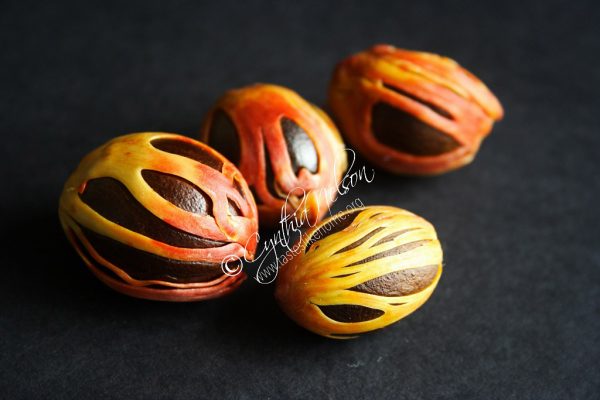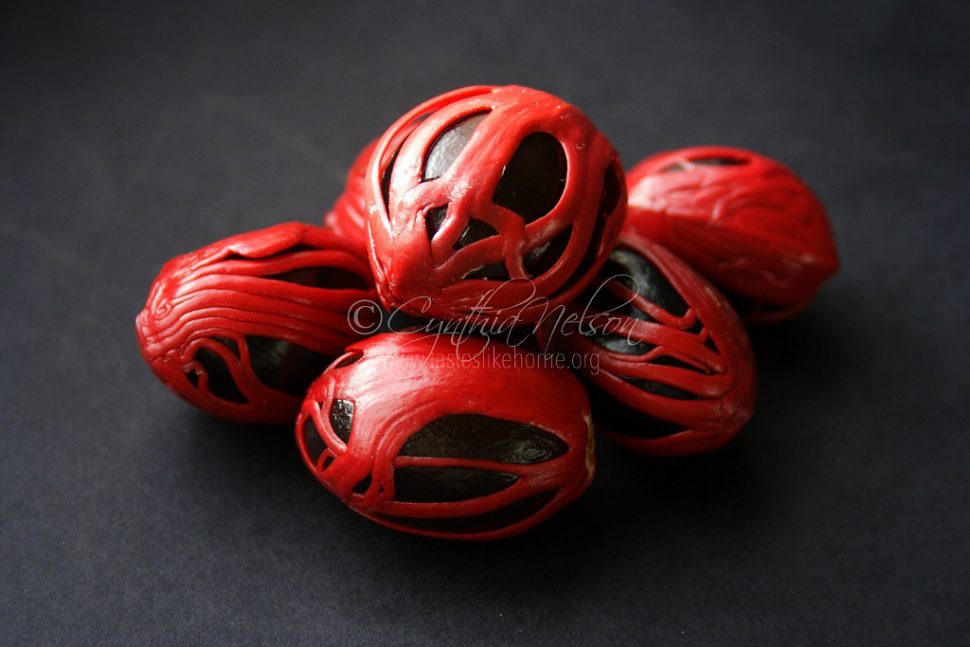
A friend living in the England was recently in the Caribbean vacationing with her family. They island-hopped and one of the places they visited was Grenada where she picked up a bottle of ground mace. Upon her return home, she wrote to ask how to use the mace she had bought.
What is Mace?
It is a spice. It’s the bright-red, lacy coating around the shell of a nutmeg seed. When it’s dry, the alien-like webbing changes colour becoming yellowish-brownish. The flavour profiles of mace and nutmeg are similar, however, mace is lighter and more floral with notes of citrus and cinnamon. It is for this reason that is works so well in a variety of sweet and savoury preparations.

When left whole or in large pieces, mace is referred to as blades. However, with a few exceptions such as the setting/fermenting of certain beverages like mauby, mace is usually ground to a fine powder before being used.
How to use Mace?
Mace works in both sweet and savoury dishes as well as beverages like cocktails, and fruit drinks. It is an excellent addition to creamy preparations such porridge, punch de crème, eggnog, peanut punch and other punch drinks like soursop and pumpkin. My mother always adds mace to her mauby and the flavour is simply outstanding, if she doesn’t have mace, then she’ll add a piece of cracked nutmeg. I’ll get to substitutions a little later.
Desserts are mace-friendly. Cobblers, puddings, custards are all dishes to which mace can be added. Other sweet treats like cookies, cakes, and doughnuts benefit with the addition of mace. Anything you are making with chocolate – tart, mousse, ice cream, cake, pudding – be sure to add a little mace; it pairs very well, particularly because of the citrus and cinnamon notes found in mace.
There is a savoury side to mace too. It is one of several spices that straddle sweet and savoury. For my homemade garam masala blend, mace is a must. Actually, a lot of spice blends include mace, among them is Ras el hanout, a popular North African spice blend which plays a similar role to the cuisine of that region as garam masala does to India’s.
Still on the savoury side of things, mace can be used in stews and casseroles. In terms of proteins, I have only ever used it with pork and chicken.
Most of the mace we get in the Caribbean is from Grenada, however it can be found in other parts of the world and in the cuisines of Asia, Dutch, French and British cooking.
How is Mace used in Grenada?
According to Kizzy Rennie, a food scientist grounded in the cuisine of her homeland, who works for the local nutmeg co-op in Grenada, mace is seldom used in the domestic kitchen there. Most of the mace produced is exported.
A quick survey of some Grenadian friends revealed that mace is primarily used when making drinks.
Can Mace be substituted for Nutmeg?
The answer is yes, with conditions. The flavour will not be exact, however, it may create a flavour profile that you find that you rather prefer than the stronger nutmeg. In addition, the substitution would not be an automatic switch in terms of quantities. In other words, if a recipe calls for a quarter teaspoon grated nutmeg, you can’t simply replace it with a quarter teaspoon ground mace, you will need to add a little more and keep tasting until it suits your taste. For reference – 1 teaspoon of ground mace is equivalent of 1 tablespoon mace blades. Therefore, as with all ground spices, use judiciously.
On the other hand, ground allspice is a good substitute for ground mace.
So, the next time you go shopping and you spy some mace, do not shy away, buy some – preferably the blades; you can powder them quickly in a spice grinder.
Cynthia
cynthia@tasteslikehome.org






